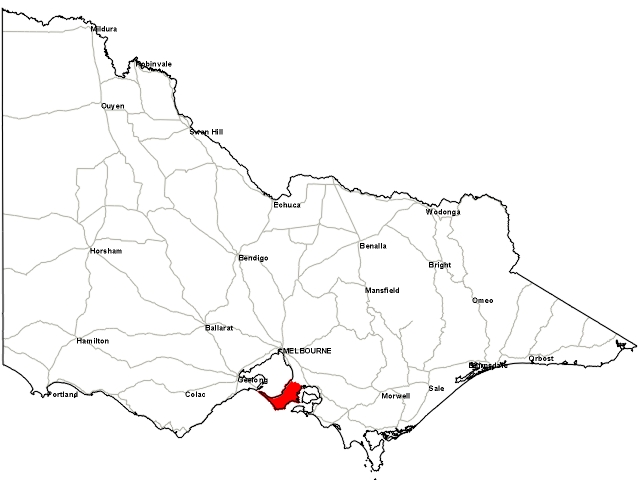|
Gidja Walker with an ancient Musk Daisy Bush (Oleara argophyllla) - one of the first high value timbers to be plundered from the damp gullies of the Red Hill ranges. The highly figured boles were exported to Germany for use in jewellery boxes and other fine joinery.
|
Go to page...
The decline of our faunaVictoria's biodiversity crisis |
The most biodiverse 750 sq km in Victoria
|
Source: Viridans
|
Numbers in brackets are the statewide averages for an area of this size Plants Total Species : 1195 (750) Native/Alien : 799/396 (563/188) Victorian Rare or Threatened : 55 (47) Australian Threatened list (EPBC Act) : 7 (4) State Flora and Fauna Guarantee Act listed: 9 (6) Eucalyptus (Myrtaceae) : 19 (19) Acacia (Mimosaceae) : 31 (19) Orchid (Orchidaceae) : 88 (38) Pea (Fabaceae) : 78 (41) Composite (Asteraceae) : 106 (90) Grass (Poaceae) : 140 (90) Animals Total Species : 362 (270) Native/Alien : 338/24 (257/14) Victorian Rare or Threatened : 75 (37) Australian Threatened list (EPBC Act) : 16 (5) State Flora and Fauna Guarantee Act listed : 37 (19) Mammal : 51 (31) Bird : 274 (208) Reptile : 26 (17) Amphibian : 11 (9) Vegetation Ecological Vegetation Classes : 42+ Bioregions : 1 (Gippsland Plains) |
These lists never mention the Forgotten Fauna, the invertebrates, the basis of all biodiversity and ecological processes
They constitute 97% of all terrestrial animal species, the insects, molluscs, worms etc. many of which are so small as to be virtually invisible. They're subject to the same threatening processes as the macrofauna, which are reaching critical levels on the Mornington Peninsula. Loss of habitat and unsustainable, ecologically ignorant land use practices are the usual suspects in the decline of biodiversity everywhere
They constitute 97% of all terrestrial animal species, the insects, molluscs, worms etc. many of which are so small as to be virtually invisible. They're subject to the same threatening processes as the macrofauna, which are reaching critical levels on the Mornington Peninsula. Loss of habitat and unsustainable, ecologically ignorant land use practices are the usual suspects in the decline of biodiversity everywhere


